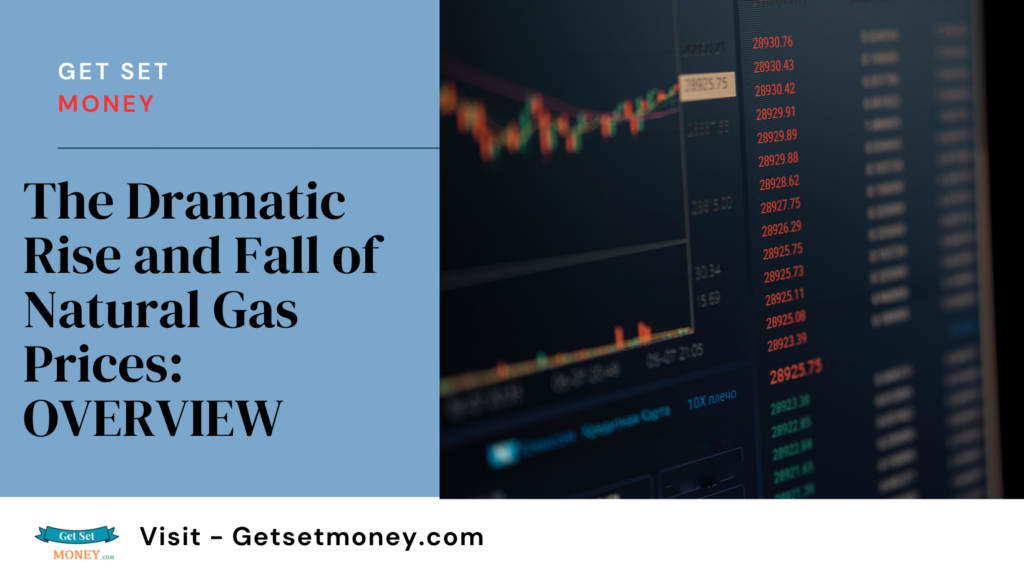
Introduction:
Natural gas prices have experienced a rollercoaster journey over the past two years, grabbing headlines with unprecedented highs in 2022 and unexpected lows in 2023. In the wake of Russia’s invasion of Ukraine, Europe faced severe supply disruptions, causing natural gas prices to skyrocket to record levels. However, as 2023 progresses, natural gas prices have plummeted to pre-conflict levels, raising questions about the factors driving this dramatic shift.
By mid-April 2023, the benchmark US natural gas futures were trading at around $2 per million British thermal units (MMBtu), a stark contrast to the nearly $10/MMBtu seen during the peak of the 2022 summer heatwave. Similarly, in Europe, prices at the Netherlands’ Title Transfer Facility (TTF) dropped to around €36 per megawatt hour (MWh) by early May, far below the €340/MWh peak of August 2022. This significant decline can be attributed to several factors, including reduced demand due to high prices, increased production, a milder winter, and shifts towards alternative energy sources. As global markets adjust to these changes, the natural gas industry faces a new landscape of challenges and opportunities
Content :
Natural gas captured headlines in 2022 when Russia’s reduction of pipeline supplies to Europe caused prices to soar in the early months. However, in 2023, natural gas prices have plummeted back to pre-war levels and even lower. This decline has occurred despite the ongoing conflict.
By mid-April, the benchmark US natural gas futures contract, based on delivery at the Henry Hub in Erath, Louisiana, traded around $2 per million British thermal units (MMBtu). This price hadn’t been seen since September 2020. In August 2022, prices had surged to nearly $10/MMBtu due to a US heatwave that increased demand for cooling systems and rapidly depleted stored gas inventories.
Meanwhile, in Europe, the price of natural gas futures for delivery at the Netherlands’ Title Transfer Facility (TTF) fell to around €36 per megawatt hour (MWh) by early May, reaching nearly a two-year low. This drop followed a spike to record highs of €340/MWh last August, mainly because Moscow significantly cut gas supplies to Europe in response to economic sanctions imposed due to the invasion of Ukraine. Additionally, Europe’s power sector increased its gas-burning requirements.
Despite the conflict, the last few months of 2022 and the beginning of 2023 saw these post-war gains in natural gas prices completely erased. The first quarter of 2023 witnessed a 50 percent collapse in US prices. Although Henry Hub prices stabilized within the $2.00-$2.50/MMBtu range by late February, Europe’s TTF prices continued to decline into May.
One reason for this collapse is the significant drop in natural gas demand in Europe due to the previously high prices, prompting a shift to alternative energy sources. According to the International Energy Agency (IEA) in its “Gas Market Report, Q1-2023,” OECD Europe’s natural gas consumption fell by an estimated 13 percent (over 70 billion cubic meters) last year, the steepest decline in absolute terms ever recorded. Over 40 percent of this reduction occurred in the fourth quarter, with a year-on-year drop of about 20 percent (33 bcm).
McKinsey & Company also reported a 57-bcm reduction in gas demand in Europe—11 percent lower than 2021 levels—primarily driven by decreased demand in buildings during the 2022-23 winter. This suggests a behavioral change in response to high gas prices, with energy-intensive industries reducing consumption and experiencing significant production curtailments.
Gas-fired power generation dropped by more than 10 percent year-on-year in the fourth quarter, influenced by lower electricity demand, strong wind-power output, and a switch from gas to coal. This decline in demand coincided with record-high storage levels in Europe, as policies required storage operators to maximize injections to ensure sufficient winter supply. By November 1, storage stocks were 95 percent full, well above the 2011-22 average of 89 percent. Both Europe and the United States managed to fill their storage capacities ahead of schedule, sending a bearish signal to the natural gas markets.
A mild 2022-23 winter across the northern hemisphere further reduced heating demand, swelling storage inventories. By April 1, Europe’s storage reached all-time high levels for that time of year, with 2.02 trillion cubic feet (56 percent full). Storage stocks at the end of January, February, and March also hit record levels for those months. The U.S. Energy Information Administration (EIA) attributed Europe’s high storage levels to a warm winter, reduced gas consumption from conservation efforts, and record LNG imports offsetting lower Russian pipeline imports.
In the United States, booming natural gas production, especially from the Permian Basin of Texas and New Mexico, has contributed to the price decline. The US, already the world’s largest natural gas producer, saw record-high gas volumes each month this year. This increase in supply, largely associated with higher crude-oil production, has resulted in gas storage levels about one-fifth higher than normal.
Liquefied natural gas (LNG) also plays a significant role in the natural gas market, with new export terminals expected to impact prices. With Russia’s reduced gas supplies to Europe, LNG exporters have stepped in to fill the gap. The US is set to expand its LNG export capacity, potentially surpassing Qatar and Australia this year.
Despite the current bearish market, some analysts believe natural gas prices could rise again in the short term. Major producers have indicated they might slow output if prices continue to fall. Additionally, a recovery in LNG demand in Asia, especially in China, could drive prices up. The IEA noted that China’s demand could rise by up to 10 percent this year following the lifting of pandemic restrictions. Increased competition on global markets could push prices higher.
Jera Co., Inc., the world’s top LNG buyer, warned that renewed market volatility and severe weather conditions could trigger another price spike before the end of the year. Rising import capacity in Europe and resurgent demand in China could send prices soaring, emphasizing the need for buyers to remain vigilant.

